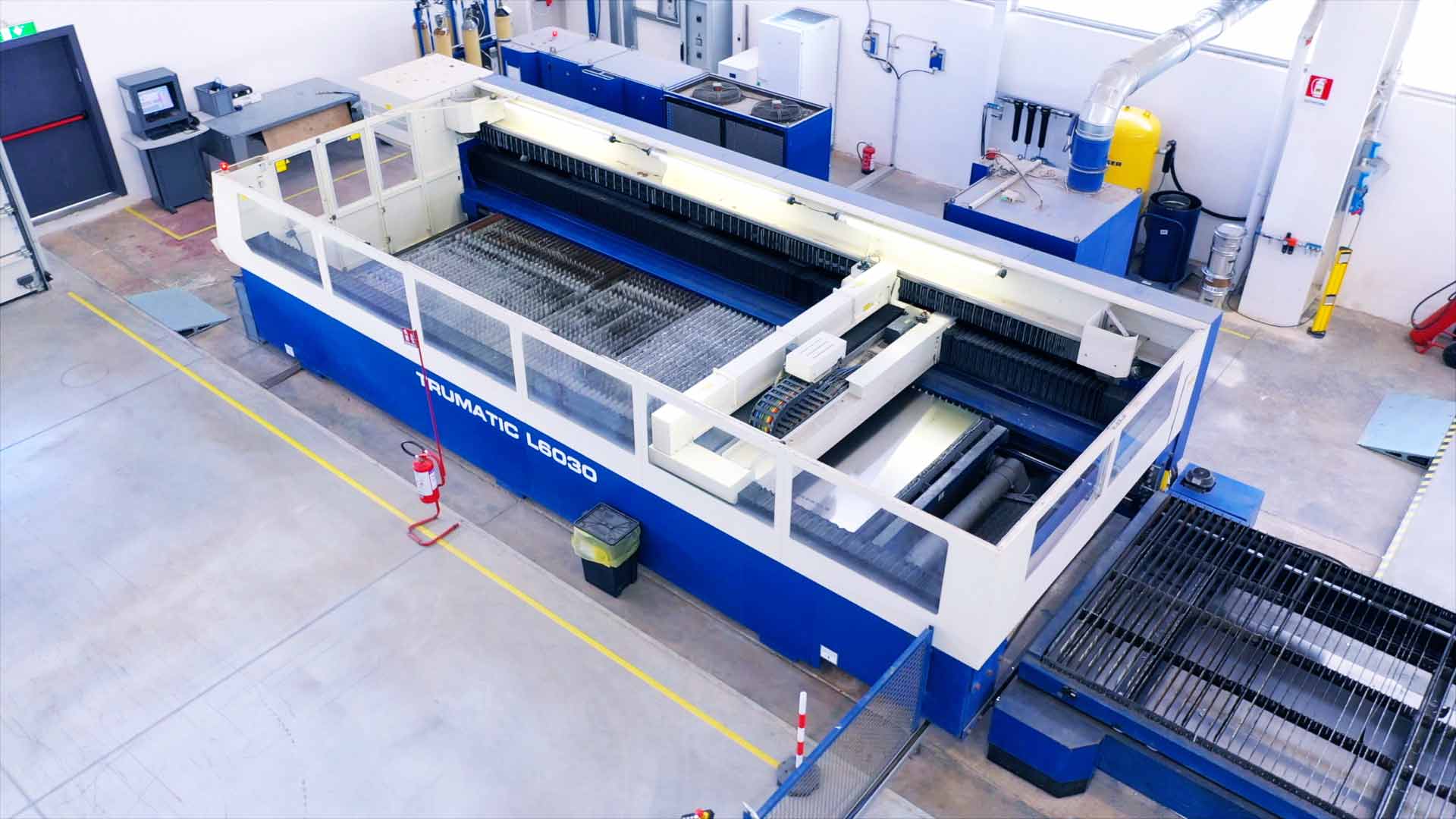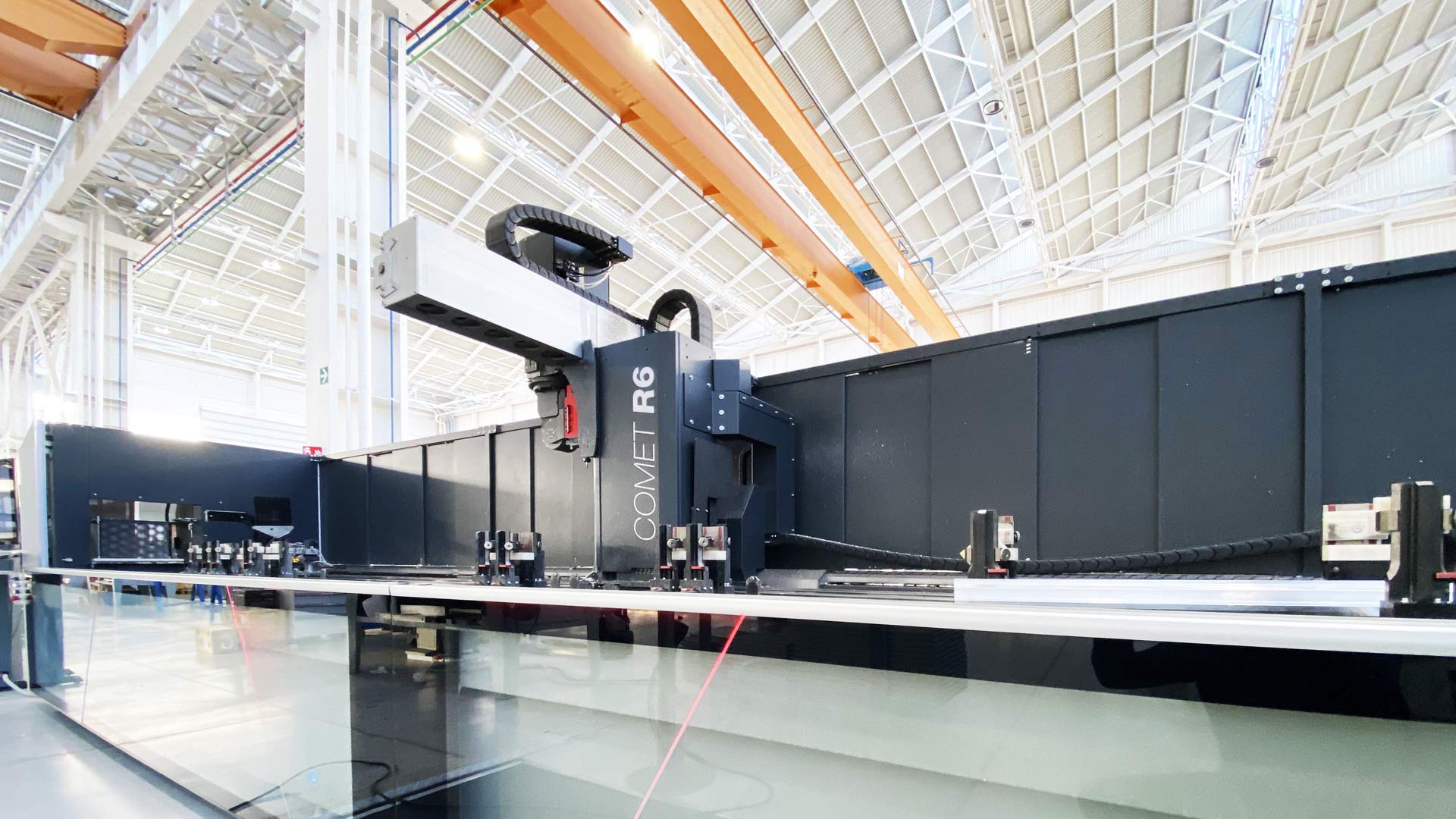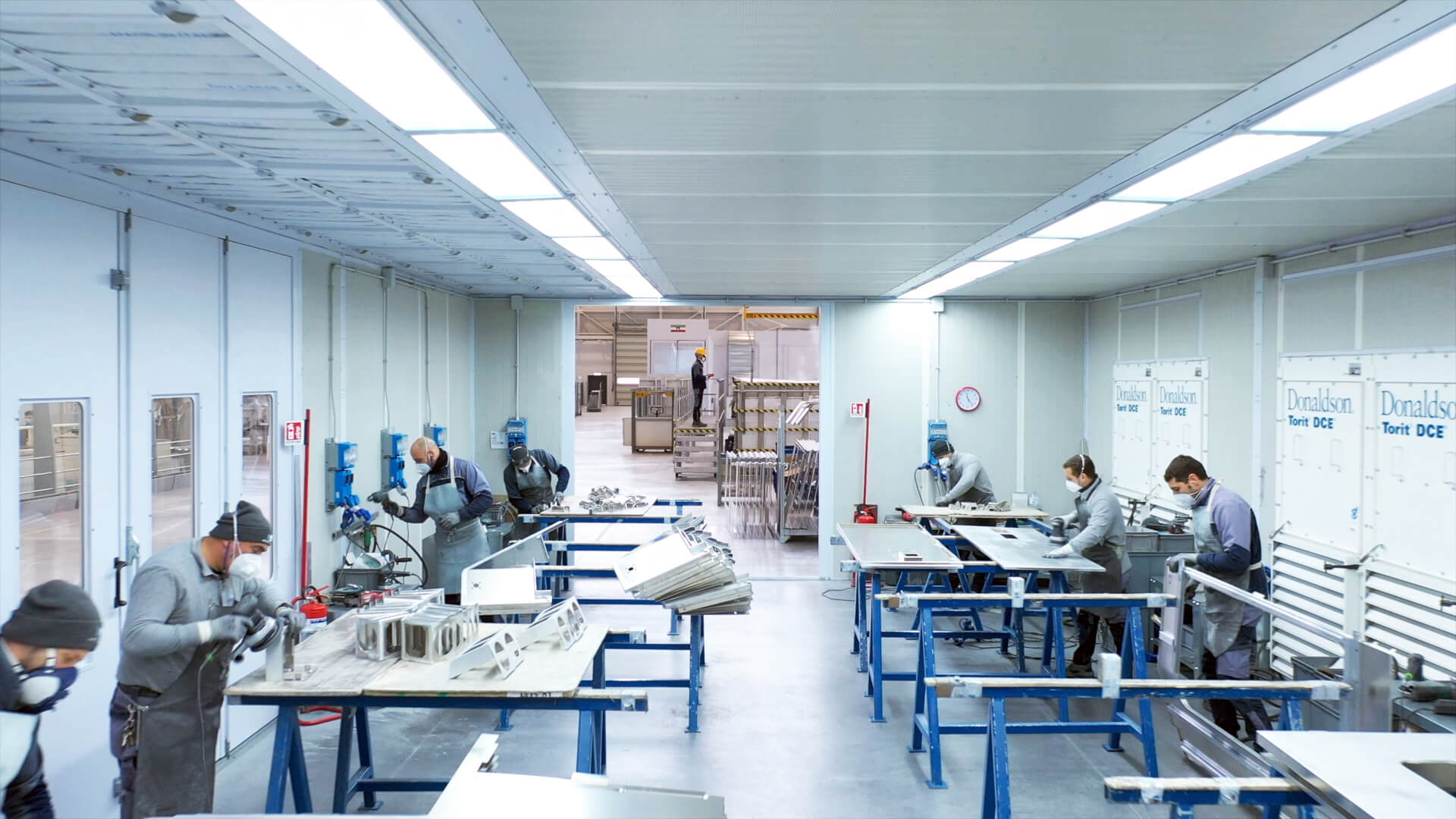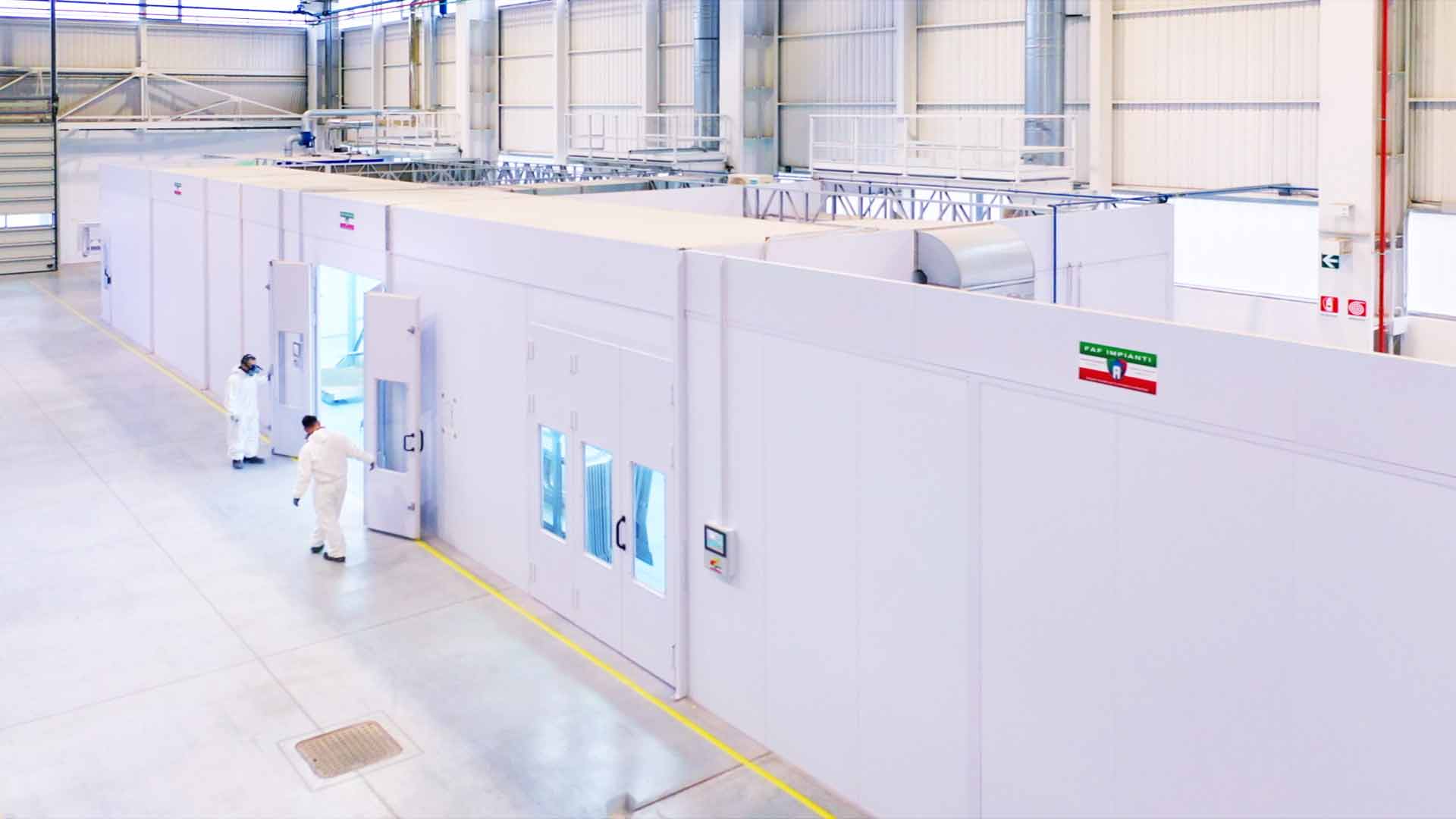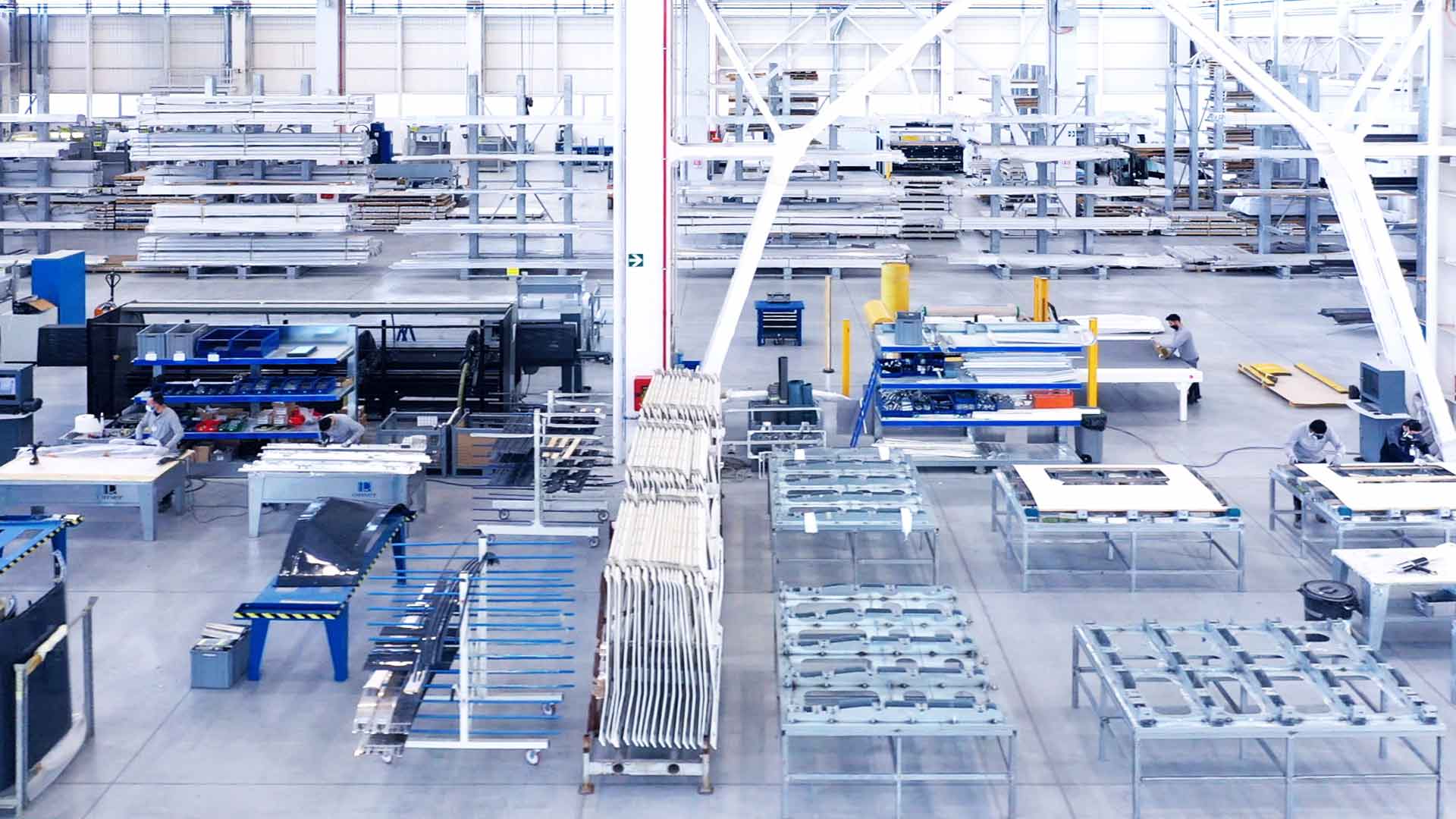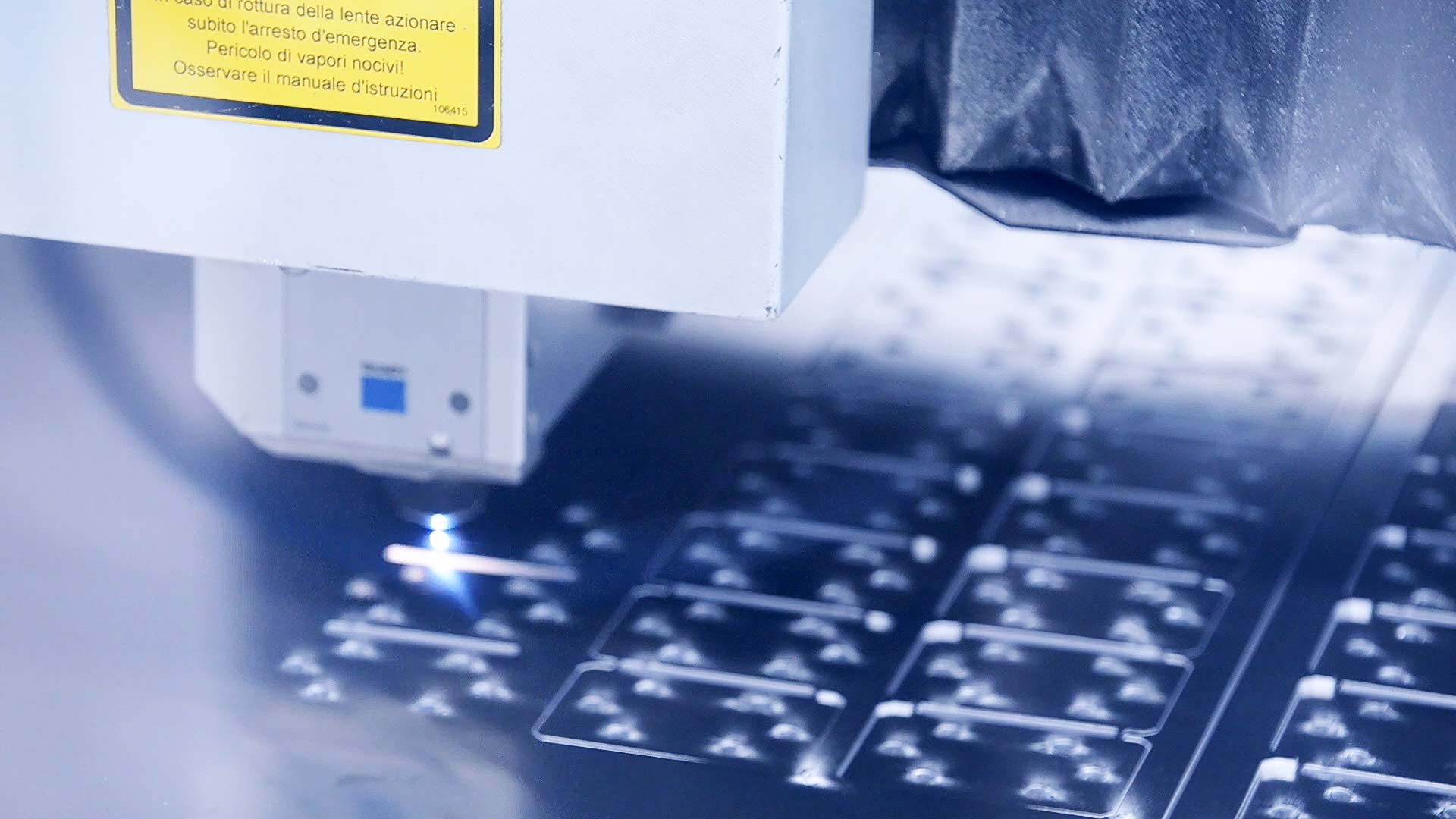
Technologies.
In the Carini industrial plant, all the machinery present in Plant A and Plant B are fully integrated and digitized in compliance with the Industry 4.0 rationale.
The machines, remotely programmed by a specialist technical office, guide the operators through the precise sequences to be performed.
Equipment and tools are periodically checked and calibrated, while accurate data recordings and the subsequent analyses constantly maximize production efficiency.
Machines and plants
The Group’s plants are equipped with the following technologies and processes:
Automatically loading/unloading laser cutting machines with working areas of up to 6 mx2 m and powers of up to 4kW. Thanks to this technology, shaped sheets are obtained from flat sheet metal.
Forming presses with pressure forces up to 6300 KN. This process allows the plastic deformation of a flat sheet so as to give it the desired shape.
The company, which has always aimed to manufacture internally the tooling needed for production, has over time gained a strong know-how in the production of molds dedicated to cold & warm forming by developing a particular proprietary forming cycle, known as Warm Forming, which allows to produce aluminum formed sheets with significant deformations in a single phase.
Folders with working dimensions up to 4 m and pressing forces up to 1700 KN. This technology allows the mechanical bending of flat and shaped sheets.
2, 3 and 5 axes CNC machines for drilling, milling and cutting of extrusions, machined, fabrics and wood.
Classic TIG/MIG welding stations and with anthropomorphic robots. Sub-assemblies are welded and riveted on these stations.
Vertical automatic warehouse.
Grinding cabins for a total area of 200 square meters where about 20 specialized operators can operate at the same time. This processing is necessary to obtain surfaces that are suitable for the subsequent painting treatment.
Pasting booths where subassemblies are glued.
Pickling plants. This process removes and dissolves the surface oxides, such as welding oxides, rust or polluting slags that are present on the components.
Powder coating systems.
Solvent-based painting plants (one of which in the Omer NA plant).
Work benches for the assembly of carpentry and finished products.
Automatic system for checking continuity and electrical insulation. This process leads to the creation of wiring and electrical panels for subsequent installation on the items to be supplied.
